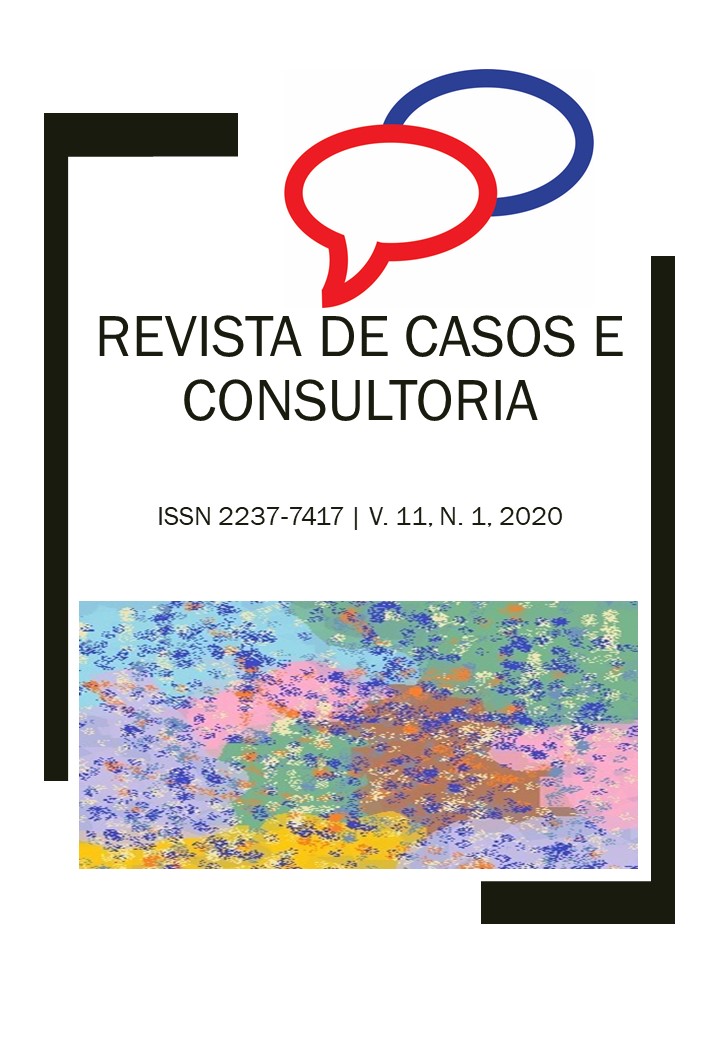Analysis of the impact of the pharmacokinetic similarity of proton pump inhibitors
Keywords:
Pharmacokinetics; Proton pump inhibitors; Pharmacoeconomics.Abstract
A widely used therapeutic class and with many drugs are proton pump inhibitors (PPIs), which act by inhibiting the secretion of hydrochloric acid in the intestinal lumen in the parietal cell by means of the proton pump, thereby preventing acidification of the Stomach Ph, and thus promoting the increase in Ph. The study was carried out in order to investigate the pharmacokinetic differences between proton pump inhibitors (PPIs) and whether these differences really justify the development of new drugs. This study is characterized as a documentary research, with a quantitative and analytical-discursive approach, carried out through Micromedex solutions®, an international scientific platform used by health professionals in the clinic for the safe management of patient therapy. Dexlansoprazole and esomeprazole are the most superior differences in medication compared to the others. On the other hand, pantoprazole and omeprazole are the drugs that have shorter activities. The cost-benefit, similarity and quantity of PPIs lead us to believe that the total amount of PPIs present on the market with quite similar characteristics, presumably, without pharmacological purposes, may be unnecessary. It is unnecessary from the pharmacokinetic and pharmacological point of view the high range of drugs produced for the same purpose, since not all of them have enough differences to be placed on the market.
Downloads
References
ANDERSSON, T.; WEIDOLF, L. Stereoselective disposition of proton pump inhibitorsClinical Drug Investigation, 2008.
CLIFTON, B. E.; JACKSON, C. J. Ancestral Protein Reconstruction Yields Insights into Adaptive Evolution of Binding Specificity in Solute-Binding Proteins. Cell Chemical Biology, v. 23, n. 2, p. 236–245, 18 fev. 2016. Disponível em: <https://pubmed.ncbi.nlm.nih.gov/26853627/>. Acesso em: 20 jul. 2020.
HAMMOND, D. A. et al. Cost-Effectiveness of Histamine2 Receptor Antagonists Versus Proton Pump Inhibitors for Stress Ulcer Prophylaxis in Critically Ill Patients. Pharmacotherapy, v. 37, n. 1, p. 43–53, 1 jan. 2017. Disponível em: <https://pubmed.ncbi.nlm.nih.gov/27809338/>. Acesso em: 21 jul. 2020.
HEIKKINEN, E. M. et al. Distribution of small molecular weight drugs into the porcine lens: studies on imaging mass spectrometry, partition coefficients, and implications in ocular pharmacokinetics. Molecular Pharmaceutics, v. 16, n. 9, p. 3968–3976, 3 set. 2019. Disponível em: <https://pubmed.ncbi.nlm.nih.gov/31348666/>. Acesso em: 20 jul. 2020.
LEONTIADIS, G. I. et al. Systematic reviews of the clinical effectiveness and cost-effectiveness of proton pump inhibitors in acute upper gastrointestinal bleedingHealth Technology AssessmentNIHR Journals Library, , 2007. . Disponível em: <https://pubmed.ncbi.nlm.nih.gov/18021578/>. Acesso em: 21 jul. 2020.
MALFERTHEINER, P.; KANDULSKI, A.; VENERITO, M. Proton-pump inhibitors: Understanding the complications and risksNature Reviews Gastroenterology and HepatologyNature Publishing Group, , 1 dez. 2017. . Disponível em: <https://pubmed.ncbi.nlm.nih.gov/28930292/>. Acesso em: 20 jul. 2020.
MAVROUDIS, P. D.; KOSMIDIS, K.; MACHERAS, P. On the unphysical hypotheses in pharmacokinetics and oral drug absorption: Time to utilize instantaneous rate coefficients instead of rate constants. European Journal of Pharmaceutical Sciences, v. 130, p. 137–146, 15 mar. 2019. Disponível em: <https://pubmed.ncbi.nlm.nih.gov/30690188/>. Acesso em: 20 jul. 2020.
MINGMING, Y. et al. Pharmacokinetics, Tissue Distribution and Excretion Study of Fluoresceinlabeled PS916 in Rats. Current Pharmaceutical Biotechnology, v. 18, n. 5, 26 abr. 2017. Disponível em: <https://pubmed.ncbi.nlm.nih.gov/28443509/>. Acesso em: 21 jul. 2020.
SAVARINO, V. et al. Proton pump inhibitors: use and misuse in the clinical settingExpert Review of Clinical PharmacologyTaylor and Francis Ltd, , 2 nov. 2018. . Disponível em: <https://pubmed.ncbi.nlm.nih.gov/30295105/>. Acesso em: 20 jul. 2020.
SHIN, J. M.; KIM, N. Pharmacokinetics and pharmacodynamics of the proton pump inhibitorsJournal of Neurogastroenterology and MotilityJ Neurogastroenterol Motil, , jan. 2013. . Disponível em: <https://pubmed.ncbi.nlm.nih.gov/23350044/>. Acesso em: 20 jul. 2020.
SU, M. et al. Pharmacokinetics, tissue distribution and excretion study of trans-resveratrol-3-O-glucoside and its two metabolites in rats. Phytomedicine, v. 58, 1 maio 2019. Disponível em: <https://pubmed.ncbi.nlm.nih.gov/30901659/>. Acesso em: 21 jul. 2020.
TANG, C. et al. Mechanism of reductive metabolism and chiral inversion of proton pump inhibitors. Drug Metabolism and Disposition, v. 47, n. 6, p. 657–664, 2019. Disponível em: <https://pubmed.ncbi.nlm.nih.gov/30962289/>. Acesso em: 20 jul. 2020.
TODA, R. et al. Mass balance and metabolism of Z-215, a novel proton pump inhibitor, in healthy volunteers. Xenobiotica, v. 48, n. 10, p. 1006–1020, 3 out. 2018. Disponível em: <https://pubmed.ncbi.nlm.nih.gov/29092680/>. Acesso em: 20 jul. 2020.
WANG, J. et al. Absorption, Pharmacokinetics and Disposition Properties of Solid Lipid Nanoparticles (SLNs). Current Drug Metabolism, v. 13, n. 4, p. 447–456, 9 abr. 2012. Disponível em: <https://pubmed.ncbi.nlm.nih.gov/22443539/>. Acesso em: 20 jul. 2020.
WEDEMEYER, R. S.; BLUME, H. Pharmacokinetic drug interaction profiles of proton pump inhibitors: An updateDrug SafetyAdis International Ltd, , 2014. . Disponível em: <https://pubmed.ncbi.nlm.nih.gov/24550106/>. Acesso em: 20 jul. 2020.

 Português (Brasil)
Português (Brasil) English
English Español (España)
Español (España)